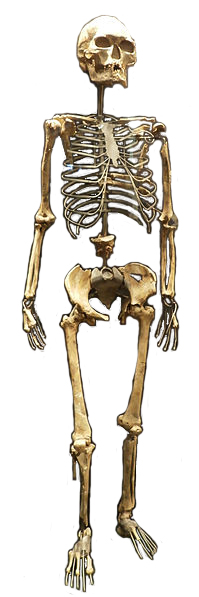
The "Minatogawa" people are a prehistoric people of Okinawa, Japan, represented by four skeletons, two male and two female, and some isolated bones dated between 16,000 and 14,000 years BCE. They are among the oldest skeletons of hominids yet discovered in Japan. The individuals were rather short (about 1.55 m for the males, 1.40 m for the females) and their cranial capacity was close to the lower end of the range of the latter prehistoric Jōmon (10,000 to 2,000 years ago) and modern Japanese. The teeth were extremely worn out, suggesting an abrasive diet. In one of the mandibles, the two median incisors had been knocked out at the same time, well before death—a custom that is known to have been practiced by the Jomon people.
For more information, click here. Or, Try these sources:
- Kobayashi, H.; Hirose, T.; Sugino, M.; Watanabe, N. (1974). "TK-99. Minatogawa". Radiocarbon. 16: 384.
- Haruto Kodera (2006). "Inconsistency of the maxilla and mandible in the Minatogawa Man No. 1 hominid fossil evaluated from dental occlusion". Anatomical Science International. 81 (1): 57–61. Can be read here.
- Peter Brown. Can be read here.